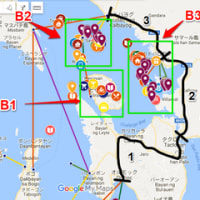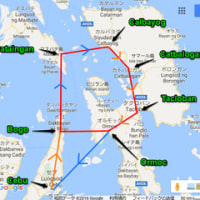from a finite quantity to an infinite number of elements
I have been intrigued throughout my life by the theory of calculus. I once actually asked a mathematician about this issue. That is, the foundation of the theory. Not surprisingly, he blurbed a lot about it. What then was so obvious to him was not quite obvious to me, at all.
I now realize that the starting premises were diametrically different between us. Up until very recently I had been bothered about the possibility or (to me ) near certainty of adding infinitely small elements infinitely will lead eventually to an infinitely large entity.
While I have had to accept the theory on face value (to pass exams) I have had, throughout my life, a nagging thought and feeling that the whole thing somehow is a sheer lie.
If only (1/infinity) x infinity = 1, but that would be silly, and a voice at the back of my mind keeps saying that there can be infinitely infinite infinites.
However, it daunted on me a few days ago that you can start out from a finite quantity to create an infinite number of elements and integrate backwards, to arrive at the same finite quantity.
This, I can accept, intuitively, because no matter how large the number of elements is you cannot deny the fact that you started out from a finite quantity. On the other hand if you start out from an infinitely small element (an infinitesimal) and add them infinitely you will never know where and when to stop.
Let me illustrate what I am getting at with an example. If you have a foot long bar of soap and slice it into a million slices, say, and add them together and see how long the resultant is. It is one foot, no less, no more.
If you then slice the same bar into an infinite number of slices and put them back again you get the same one foot long soap bar. You have just added an "infinite" number of slices, whatever this "infinite" means, and in theory you have added them all.
I think, therefore, after all, that it is all philosophical. Nobody really knows how small these infinitesimals are. They only say "very small". Perhaps, it does not matter in creating the theory of integral and differential calculus. Perhaps, more so if the theory helps us find solutions to our practical problems.
So, let us put some numbers in and see how the whole thing might work out.
Let us imagine that we put a string all around the earth surface (along the maximum circumference) so that there is no gap between the string and the ground. The string does not stretch. It does not shrink, either.
Now, extend this string by one meter, just one meter only. Because it is longer the ring around the earth is a little loose and there should be a gap between the string and the ground. Here we imagine that somehow we can create and keep a constant gap all around the globe.
I do not know off hand how large the earth is. However, I do know that flying from Tokyo to London is something like 10,000 km, so double that, perhaps? That means the ratio is 1/(20,000x1000). It is an extremely small ratio and an extremely small number, I think. (2千万分の1)
Now, the question to be asked is as follows.
What is the height of this gap?
There are actually several ways to answer this question. Let us first take an order of magnitude calculation. Because we started with a 1 m extension the answer we are looking for should fall somewhere between 0.1 m and 10 m. Here, note that we are not dealing with a very convoluted system.
Now, the circumference, 2 xπx (radius of the earth) is equal to 20, 000 km from above consideration. Since 2 x π is equal to 10, you get, as the radius of the earth, 2000 km.
Given the ratio of 1/(20,000x1000) the answer is therefore likely to be 0.1 m. And, intuitively, that is about right.
Of course, at the elementary school level you can use brutal force calculation and put in exact numbers and do essentially subtraction and get the answer. But, that would be silly and not very elegant.
OK, we now look at it differently. Here, we want to talk about an infinitely small arc length. However, let us see before that how we actually arrive at 2πR as the length of the circumference of a circle with the radius of R.
Let us assume that we have an arc and its ends are connected to the centre by two straight lines which are equal to R in length.
If you draw an auxiliary line from one of the arc ends to the line opposite to it at 90 degrees the length of this auxiliary line is equal to R x sine (whatever the angle between the two intersecting lines in radian). We call this angle Δtheta.
We have, therefore, the auxiliary line length = R x sine(Δtheta). Now, it is well known that if this angle is very small then sine (Δtheta) is equal to Δtheta in radian.
Therefore, if you integrate this infinitely short arc length over the entire 360 degrees (2π) of a circle you get 2πR. It is the length of the circumference. Here, remember that R is the radius, pointing outwards from the centre.
OK, we are now, at long last, at the starting point for the final stage of our consideration.
We are, here right now, talking about an infinitesimal increase in the circumference. What is the mathematical expression for the circumference? It is 2πR and R is the radius.
We are saying that the circumference has increased by a tiny amount. In the jargon of differential calculus, it is denoted 2πΔR. We are, in addition, saying that it is equal to 1 m.
So, we have a formula, 2πΔR=1. Please be reminded that ΔR is the radial increment that we are looking for. We therefore know that the gap height is about 16 cm. And, this is in line with our order of magnitude calculation.
We also see, interestingly enough, that it is independent of the radius. Quite clearly, we cannot take measurements with big objects like the earth, but we can easily do so with a foot ball, or even a ping pong ball.
The point of this article is to gain confidence in our integral and differential calculus. I am amazed that Takakazu Seki, our ancestral mathematician of the Yedo period produced his own version of the theory.
Dynamical motions in our universe are all governed by the laws of physics and mathematicians have been helping us find ΔVs so vital for the successful operation of our spacecraft out there in deep space, even at this moment in time...
最新の画像[もっと見る]
-
 アンドロイド版 Google Map とアンドロイド版 Google Earth 徹底比較
8年前
アンドロイド版 Google Map とアンドロイド版 Google Earth 徹底比較
8年前
-
 アンドロイド版 Google Map とアンドロイド版 Google Earth 徹底比較
8年前
アンドロイド版 Google Map とアンドロイド版 Google Earth 徹底比較
8年前
-
 Canon Coolpix AW130 位置情報の操作(詳細-3 ログファイル)
8年前
Canon Coolpix AW130 位置情報の操作(詳細-3 ログファイル)
8年前
-
 Canon Coolpix AW130 位置情報の操作(詳細-3 ログファイル)
8年前
Canon Coolpix AW130 位置情報の操作(詳細-3 ログファイル)
8年前
-
 Fishing trips in the Philippines - Samar (3)
8年前
Fishing trips in the Philippines - Samar (3)
8年前
-
 Fishing trips in the Philippines - Samar (1)
8年前
Fishing trips in the Philippines - Samar (1)
8年前
-
 コタキナバル起点のボルネオドライブ情報-最新版
8年前
コタキナバル起点のボルネオドライブ情報-最新版
8年前
-
 コタキナバル起点のボルネオドライブ情報-最新版
8年前
コタキナバル起点のボルネオドライブ情報-最新版
8年前
-
 コタキナバル起点のボルネオドライブ情報-最新版
8年前
コタキナバル起点のボルネオドライブ情報-最新版
8年前
-
 コタキナバル起点のボルネオドライブ情報-最新版
8年前
コタキナバル起点のボルネオドライブ情報-最新版
8年前










※コメント投稿者のブログIDはブログ作成者のみに通知されます